Coltsfoot
- Scientific name: Tussilago Farfara
- Family: in the groundsel tribe of the daisy family Asteraceae
- Recommended variety: Tussilago farfara ‘Wien’
- Parts Used: Leaves, flowers, root.
- Medicinal Actions: Demulcent, expectorant, tonic, antitussive, anticatarrhal, diuretic, emollient, pectoral.
- Constituents: All parts of the plant abound in mucilage, and contain inulin, zinc, a little tannin and a trace of a bitter amorphous glucoside. The flowers contain also a phytosterol and a dihydride alcohol, Faradial, and carotene
Cautions:
Coltsfoot root contains tumorigenic pyrrolizidine alkaloids and it suspected that there may be small quantities in the leaves. There are documented cases of coltsfoot tea causing severe liver problems in an infant, and in another case, an infant developed liver disease and died because the mother drank tea containing coltsfoot during her pregnancy. In response the German government banned the sale of coltsfoot. Clonal plants of colstfoot free of pyrrolizidine alkaloids were then developed in Austria and Germany. This has resulted in the development of the registered variety Tussilago farfara ‘Wien’ which has no detectable levels of these alkaloids.
The Basics:
The coltsfoot is another wonderful remedy for coughs and colds, whooping cough and shortness of breath. It has a little yellow flower that smells of honey and blooms in February, long before the leaves which grow to enormous size.
Coltsfoot grows nearly everywhere, on rubble heaps, by the side of newly-made roads, on railway banks and on coal mine tips. In fact there is a very old gypsy saying that wherever coltsfoot grows freely, coal will be found. Once it was so revered in France that coltsfoot flowers were painted as a sign on the doorpost of apothecarie’s shops to let people know that the art of healing was practiced there.
Coltsfoot combines a soothing expectorant effect with an antispasmodic action. There are useful levels of zinc in the leaves. This mineral has been shown to have marked anti-inflammatory effects. Coltsfoot may be used in chronic or acute bronchitis, irritating coughs, whooping coughs and asthma. Its soothing expectorant action gives coltsfoot a role in most respiratory conditions, including the chronic state of emphysema.
The Romanies praise this herb very highly. It also has been a part of Chinese folk medicine for centuries.
A decoction of the leaves of the herb coltsfoot to a pint of boiling water (strain before drinking) is very good for colds, coughs and asthma. If you haven`t time to make a decoction when a cough is bad, use an infusion of coltsfoot and take in teacupful dose. It can be sweetened to taste with honey.
As a mild diuretic it has been used in cystitis.
An infusion or juice from fresh leaves can be used as an antiseptic wash for wounds and skin blemishes. The fresh bruised leaves can be applied to boils, abscesses and suppurating ulcers as a poultice, (enclosed in fine muslin to prevent skin irritation)..
Description
Coltsfoot is a low-growing perennial with fleshy, woolly leaves. A member of the daisy family, coltsfoot produces a single golden-yellow flower head that blooms in spring. As the stem dies, the leaves appear. It has long-stalked, hoof-shaped leaves, about 4 inches across, with angular teeth on the margins. The top of the leaf surface is smooth and almost waxy in appearance, while the underside is covered with white, wool-like hairs. Both surfaces of the leaves are covered, when young, with loose, white, felted woolly hairs, but those on the upper surface fall off as the leaf expands.
The bright yellow flowers appear early in the spring, prior to the emergence of any leaves. In Southern Ontario, coltsfoot flowers in April, often before the last of the snow melts. Flower heads have even been known to push through snow. Some people confuse these flowers with dandelion flowers.
The specific name of the plant is derived from Farfarus, an ancient name of the White Poplar, the leaves of which present some resemblance in form and color to those of this plant. There is a closer resemblance, however, to the leaves of the Butterbur, which must not be collected in error; they may be distinguished by their more rounded outline, larger size and less sinuate margin.
An old name for Coltsfoot was Filius ante patrem (the son before the father), because the star-like, golden flowers appear and wither before the broad, sea-green leaves are produced.
The root is spreading, small and white, and has also been used medicinally. The underground stems preserve their vitality for a long period when buried deeply, so that in places where the plant has not been observed before, it will often spring up in profusion after the ground has been disturbed. In gardens and pastures it is a troublesome weed, very difficult to get rid of.
The plant is so dissimilar in appearance at different periods that both Gerard and Parkinson give two illustrations: one entitled ‘Tussilago florens, Coltsfoot in floure,‘ and the other ‘Tussilago herba sine flore.’
‘Coltsfoot hath many white and long creeping roots, from which rise up naked stalkes about a spanne long, bearing at the top yellow floures; when the stalke and seede is perished there appeare springing out of the earth many broad leaves, green above, and next the ground of a white, hoarie, or grayish colour. Seldom, or never, shall you find leaves and floures at once, but the floures are past before the leaves come out of the ground, as may appear by the first picture, which setteth forth the naked stalkes and floures, and by the second, which porttraiteth the leaves only.’
Pliny and many of the older botanists thought that the Coltsfoot was without leaves, an error that is scarcely excusable, for, notwithstanding the fact that the flowers appear in a general way before the leaves, small leaves often begin to make their appearance before the flowering season is over.
Habitat and Cultivation
Coltsfoot, for all its beauty, tends to like rough places to hang out. Seek it in waste ground, building sites, roadsides, the edge of woods, remembering that it has a preference for heavy clay.
Coltsfoot grows abundantly throughout England, especially along the sides of railway banks and in waste places, on poor stiff soils, growing as well in wet ground as in dry situations. The plant is native to Europe, but also grows widely throughout the United States and Canada.
Coltsfoot is found in open, disturbed areas. It often grows in ditches, along roadsides, on forest edges and on steep slopes prone to landslides. It tolerates wet, poorly drained areas and riverbanks susceptible to spring flooding.
Coltsfoot is collected widely from wild plants in the Balkans, Eastern Europe (Bulgaria, Czechoslovakia, Hungary, Poland, the former Yugoslavia), and Italy.
Collection
After the leaves have died down, the shoot rests and produces in the following February a flowering stem, consisting of a single peduncle with numerous reddish bracts and whitish hairs and a terminal, composite yellow flower, whilst other shoots develop leaves, which appear only much later, after the flower stems in their turn have died down.
These two parts of the plant, both of which are used medicinally, are, therefore, collected separately and usually sold separately.
The flowers should be gathered before they have fully bloomed (end of late winter to mid-spring) and dried carefully in the shade. The leaves are best collected between late spring and early summer. They should be chopped up before they are dried and stored. The fresh leaves can be used until Fall.
Medicinal Uses
Demulcent, expectorant and tonic. One of the most popular of cough remedies. The botanical name, Tussilago, signifies ‘cough dispeller,’ and Coltsfoot has justly been termed ‘nature’s best herb for the lungs and her most eminent thoracic.’
As part of its Latin name Tussilago implies, coltsfoot is reputed as an antitussive. The buds, flowers, and leaves of coltsfoot have been long used in traditional medicine for dry cough and throat irritation. The plant has found particular use in Chinese herbal medicine for the treatment of respiratory diseases, including cough, asthma, and acute and chronic bronchitis.
It also is a component of numerous European commercial herbal preparations for the treatment of respiratory disorders. Coltsfoot preparations long have been used to soothe sore throats. The mucilage most likely is responsible for the demulcent effect of the plant.
Coltsfoot, in a mixture of Chinese herbs, has been evaluated in cases of convalescent asthmatics and found useful in decreasing airway obstruction. Related conditions for which coltsfoot has been used include bronchitis, laryngitis, pertussis, influenza, and lung congestion. It is one of the most popular European remedies to treat chest ailments. All early references emphasize the usefulness of coltsfoot’s mucilage for soothing throat and mouth irritation.
Note: Research reveals little or no clinical data on the anti-inflammatory action of coltsfoot. Because of its potential toxicity, coltsfoot is subject to legal restrictions in some countries.
The smoking of the leaves for a cough has the recommendation of Dioscorides, Galen, Pliny, Boyle, and other great authorities, both ancient and modern, Linnaeus stating that the Swedes of his time smoked it for that purpose. Pliny recommended the use of both roots and leaves. The leaves are the basis of the British Herb Tobacco, in which Coltsfoot predominates, the other ingredients being Buckbean, Eyebright, Betony, Rosemary, Thyme, Lavender, and Chamomile flowers. This relieves asthma and also the difficult breathing of old bronchitis. Those suffering from asthma, catarrh and other lung troubles derive much benefit from smoking this Herbal Tobacco, the use of which does not entail any of the injurious effects of ordinary tobacco.
According to another source, the mucilage is destroyed by burning; smoking the plant or inhaling vapors of the leaves steeped in water would not be expected to provide any degree of symptomatic relief. Instead, the smoke may exacerbate existing respiratory conditions.
The flower-stalks contain constituents similar to those of the leaves, and are directed by the British Pharmacopceia to be employed in the preparation of Syrup of Coltsfoot, which is much recommended for use in chronic bronchitis.
Culpepper says:
‘The fresh leaves, or juice, or syrup thereof, is good for a bad dry cough, or wheezing and shortness of breath. The dry leaves are best for those who have their rheums and distillations upon their lungs causing a cough: for which also the dried leaves taken as tobacco, or the root is very good. The distilled water hereof simply or with elder-flowers or nightshade is a singularly good remedy against all agues, to drink 2 OZ. at a time and apply cloths wet therein to the head and stomach, which also does much good being applied to any hot swellings or inflammations. It helpeth St. Anthony’s fire (erysypelas) and burnings, and is singular good to take away wheals.’
Pliny recommends the dried leaves and roots of Coltsfoot to be burnt, and the smoke drawn into the mouth through a reed and swallowed, as a remedy for an obstinate cough, the patient sipping a little wine between each inhalation. To derive the full benefit from it, it had to be burnt on cypress charcoal.
Tussilago farfara leaves have been used in the traditional Austrian medicine internally (as tea or syrup) or externally (directly applied) for treatment of disorders of the respiratory tract, skin, locomotor system, viral infections, flu, colds, fever, rheumatism and gout.
Coltsfoot Rock Stick, a hard boiled sweet containing extracts of the herb has long been a domestic remedy for coughs. An alcoholic wine and a beer made from Coltsfoot also have an expectoral purpose.
Preparation and Dosage:
Fill a jar with the flowers and add honey to make a remedy to help calm a cough or to sweeten a bitter herbal tea.
A decoction is made of 1 OZ. of leaves, in 1 quart of water boiled down to a pint, strained to remove any hairs from the leaves, sweetened with honey or liquorice, and taken in teacupful doses frequently. This is good for both colds and asthma.
- More remedies, and preparations can be found at Folk Medicine Remedies and Cures – Coltsfoot
Coltsfoot tea is also made for the same purpose, and can be taken one cupful at a time, but this must be strained to remove all hairs.
To make an infusion, pour a cup of boiling water onto 1 – 2 teaspoonfuls of the dried flowers or leaves and let infuse for 10 minutes. This should be drunk three times a day as hot as possible.
A decoction made so strong as to be sweet and glutinous has proved of great service in scrofulous cases, and, with Wormwood, has been found efficacious in calculus complaints.
Historical use of 4.5 to 6 g/day of crude herb has been documented.
Take 2 – 4 ml of the tincture three times a day.
Combinations
It is generally given together with other herbs possessing pectoral qualities, such as Horehound, Marshmallow, Ground Ivy, etc.
The leaves are the basis of the British Herb Tobacco, in which Coltsfoot predominates, the other ingredients being Buckbean, Eyebright, Betony, Rosemary, Thyme, Lavender, and Chamomile flowers.
Historically
Both surfaces of the leaves are covered, when young, with loose, white, felted woolly hairs, but those on the upper surface fall off as the leaf expands. This felty covering easily rubs off and before the introduction of matches, wrapped in a rag dipped in a solution of saltpetre and dried in the sun, used to be considered an excellent tinder.
The seeds are crowned with a tuft of silky hairs, the pappus, which are often used by goldfinches to line their nests, and it has been stated were in former days frequently employed by the Highlanders for stuffing mattresses and pillows.
Extracts of coltsfoot were once used as flavorings for candies, and has been consumed as a food product with some confectionery products, such as Coltsfoot Rock.
Folk and Common Names:
- Ass’s foot
- Bechichie
- Bechie
- Bechion
- Brandlattich
- British Tobacco
- Bullsfoot
- Chamæleuce
- Chasse-Toux
- Coughwort (Old English)
- Donnhove
- Farfara
- Farfarae Folium Leaf
- Feuilles de tussilage
- Fieldhove
- Filius ante patrem
- Flower Velure
- Foal’s foot
- Foalswort
- Guflatich
- Hallfoot
- Herbe aux Pattes
- Herbe de Saint-Guérin
- Horsefoot
- Horsehoof
- Kuandong hua
- Kwandong Hwa
- Pas d’Ane, Pas d’Âne, or Pas-d’Âne
- Pas-de-Baudet
- Pas Diane
- Pes pulli
- Pferdefut
- Pied-de-Cheval
- Plisson
- Procheton
- Taconnet
- Tash plant
- Tussilage
- Tussilage Pas d’Âne
- Tussilago farfara
- Uña de Caballo
- Ungula caballina
Edible Parts:
Coltsfoot flowers can be eaten. They can be tossed into salads to add a wonderful aromatic flavour, and are a sweetly delicious raw ingredient in salad or as a base for wine. Dried flowers can be dried and chopped up so that they can be added to pancakes, fritters, etc.
- A recipe for coltsfoot sorbet can be found at Eating To Live – Coltsfoot Sorbet
Young leaves can be added to soups or stews and small quantities of fresh young leaves can be used in salads. The leaves have a bitter taste unless they are washed after being boiled. An aromatic tea is made from the fresh or dried leaves and flowers. The dried and burnt leaves are used as a salt substitute.
Special Precautions and Warnings
Despite serious safety concerns, people take coltsfoot for lung problems such as bronchitis, asthma, and whooping cough (pertussis). They also take it for upper respiratory tract complaints including sore mouth and throat, cough, and hoarseness. Some people inhale coltsfoot for coughs and wheezing.
Coltsfoot is considered UNSAFE. It contains chemicals called hepatotoxic pyrrolizidine alkaloids (PAs) that can damage the liver or cause cancer. Dietary supplement products sold in the US are not required to state the amount of PAs they may contain. So, if the package doesn’t say the product is certified hepatotoxic PA- free, you can assume that there are probably hepatotoxic PAs in it. Avoid using coltsfoot products that are not certified and labeled as hepatotoxic PA-free.
Coltsfoot is considered UNSAFE for anyone, but people with the following conditions should be especially careful about avoiding this plant:
Pregnancy and breast-feeding: Coltsfoot preparations containing hepatotoxic PAs might cause birth defects and liver damage. It’s not known whether coltsfoot preparations that are free of these chemicals are safe to use during pregnancy. So, it’s best to avoid using coltsfoot altogether if you are pregnant.
If you are breast-feeding, don’t take coltsfoot either. Hepatotoxic PAs can get into breast milk. Even if the product is certified hepatotoxic PA-free, it’s best to avoid use. Not enough is known about the safety of using hepatotoxic PA-free coltsfoot during breast-feeding.
Allergy to ragweed and related plants: Coltsfoot may cause an allergic reaction in people who are allergic to the Asteraceae/Compositae plant family. Members of this family include ragweed, chrysanthemums, marigolds, daisies, and many others. If you have allergies, be sure to check with your healthcare provider before taking coltsfoot.
High blood pressure, heart disease: There is a concern that coltsfoot taken in large amounts might interfere with treatment for these conditions. Don’t use coltsfoot if you have these conditions.
Liver disease: There is a concern that hepatotoxic PAs might make liver disease worse. Don’t use coltsfoot if you have this condition.
Drug Interactions:
- Medications for high blood pressure (Antihypertensive drugs)
Excessive doses of coltsfoot seem to increase blood pressure. By increasing blood pressure coltsfoot might decrease the effectiveness of medications for high blood pressure.
- Medications that increase break down of other medications by the liver
Coltsfoot is broken down by the liver. Some chemicals that form when the liver breaks down coltsfoot can be harmful. Medications that cause the liver to break down coltsfoot might enhance the toxic effects of chemicals contained in coltsfoot.
- Medications that slow blood clotting (Anticoagulant / Antiplatelet drugs)
Coltsfoot might slow blood clotting. Taking coltsfoot along with medications that also slow clotting might increase the chances of bruising and bleeding.
2 Responses to Coltsfoot
Leave a Reply to Jon Costa Cancel reply
Vincent: Mulberry
Rennie Luttrull: queen-annes-lace-seeds
Rosanna: Spignel aka Bald Money
Annamarie Squatrito: Fumitory
EILEEN Klinghagen: Pumpkin
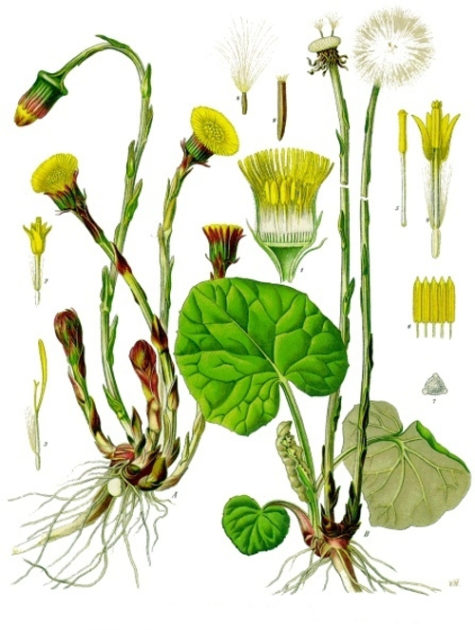
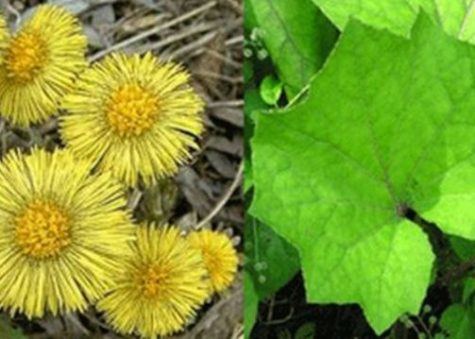
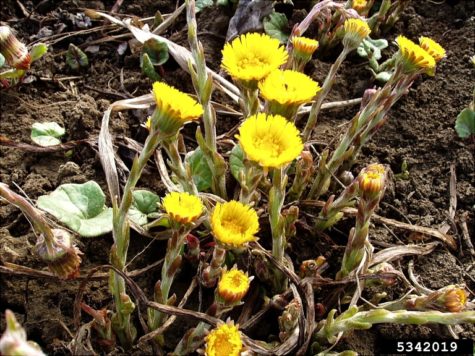
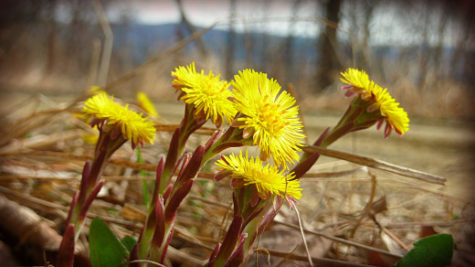
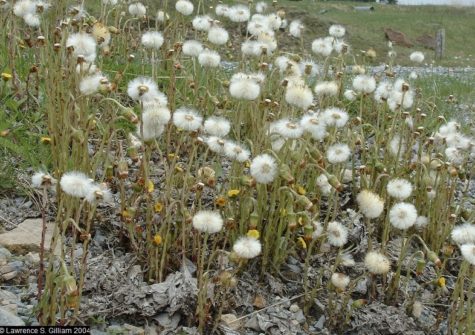
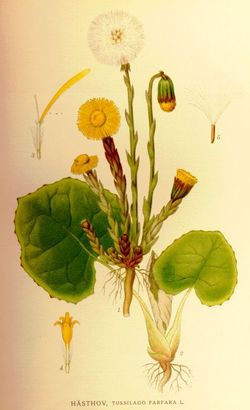
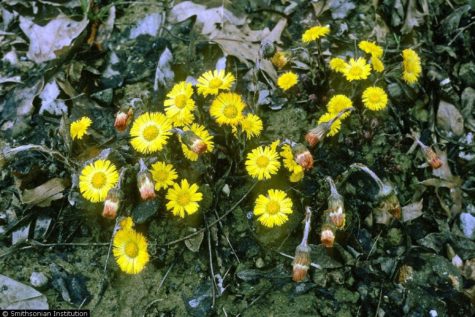


Does coltsfoot grow in Florida?
I’m sorry Jon, I am not sure. Ideal coltsfoot growing conditions consist of moist clay soil in a cool shady location, but the plants can also grow in full sun and other types of soil. So I would assume the answer is yes. But the soil in Florida tends to be sandy, so I don’t know how well it does there.